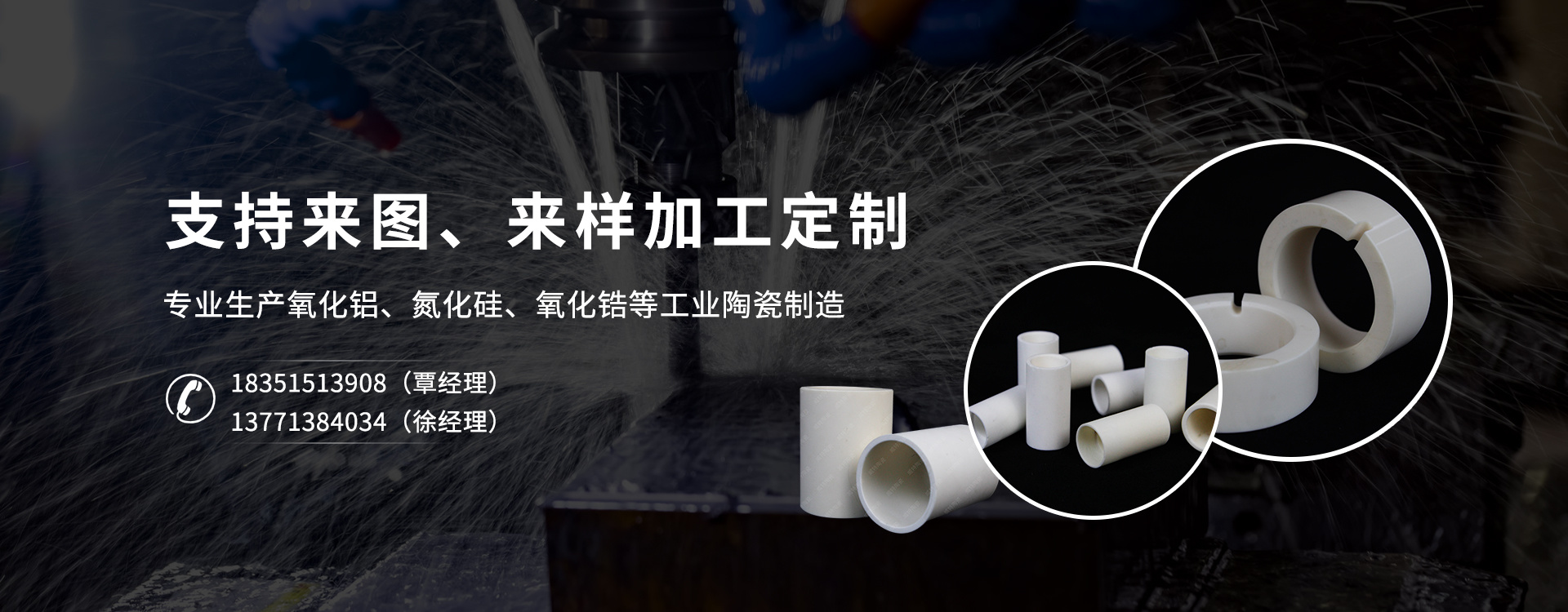
NEWS
The role of rare earths in structural ceramics, structural ceramic manufacturers tell you
Release time:
2022-06-07
Structural ceramic manufacturers believe that rare earth is the general term for 15 kinds of lanthanide elements and 17 metal elements of scandium and yttrium in the chemical periodic table. Widely used in industrial production and scientific research, it is called "industrial vitamin". The use of rare earths as additives, stabilizers and sintering aids in structural ceramics can greatly improve properties such as fracture toughness, compactness and strength, simplify the production process, and reduce production costs.

1. Application in alumina ceramics
Structural ceramic manufacturers believe that alumina (Al2O3) ceramics are widely used structural ceramics, with high strength, high temperature resistance, good insulation, wear resistance, corrosion resistance and good mechanical and electrical properties. Adding Y2O3, La2O3, Sm2O3 and other rare earth oxides can improve the wettability of Al2O3 composite materials, reduce the melting point and porosity of ceramic materials, increase the density and glass phase strength, and improve the mechanical properties of Al2O3 ceramics.
2. Application in silicon nitride ceramics
Structural ceramic manufacturers believe that silicon nitride (Si3N4) ceramics have excellent mechanical properties, thermal properties and chemical stability, and are one of the more potential high-temperature structural ceramic materials. Since Si3N4 is a strong covalent bond compound, sintering aids such as rare earth oxides Y2O3, Nd2O3, and La2O3 should be added during sintering to improve the high-temperature fracture toughness of the material.
3. Application in zirconia ceramics
Structural ceramic manufacturers believe that zirconia (ZrO2) ceramics have high density, high melting point, high hardness and other properties, especially the flexural strength and fracture toughness are the highest among all ceramics. The crystal transformation of ZrO2 is accompanied by obvious volume change, which limits the range of direct use. Rare earth oxides Y2O3, Nd2O3, Ce2O3, etc. It has a good inhibitory and stabilizing effect on ZrO2 phase transition, so that ZrO2 ceramic materials have good technical performance indicators, and can be used as solid electrolyte materials, oxygen ion conductor materials, etc. It is also used in fuel cells, sensors and other fields.
4. Application in silicon carbide ceramics
Manufacturers of structural ceramics believe that silicon carbide (SiC) ceramics have the characteristics of high temperature resistance, thermal shock resistance, corrosion resistance, wear resistance, good thermal conductivity, and light weight, and are often used as high-temperature structural ceramics. The characteristic of strong covalent bonding of SiC determines that it is difficult to achieve sintering densification under normal conditions, and Al2O3-Y2O3 is an effective sintering aid for SiC pressureless sintering. The SiC-YAG ceramic composite material produced with Y3Al5O12 as a sintering aid can achieve low-temperature dense sintering, and is considered to be one of the very promising silicon carbide ceramic systems.
5. Application in aluminum nitride ceramics
Structural ceramic manufacturers believe that aluminum nitride (AlN) ceramics have the characteristics of high melting point, high thermal conductivity, low dielectric constant, corrosion resistance to iron, aluminum and other metals and alloys, and excellent high temperature resistance in special atmospheres. It is an ideal substrate and packaging material for large-scale integrated circuits. Since AlN is a covalent bond, a single sintering aid can reduce the sintering temperature to a limited extent. Usually, composite additives (rare earth metal oxides and alkaline earth metal oxides) are used as sintering aids to form a liquid phase to promote sintering and combine with AlN. Oxygen impurity reaction, improve the thermal conductivity of AlN.
Recommend




